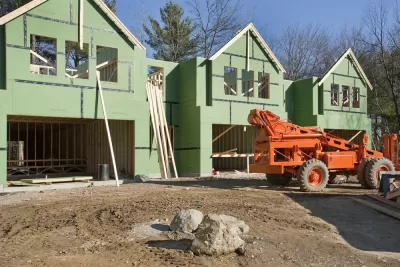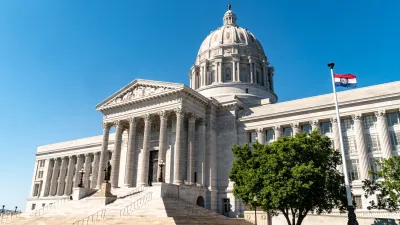The housing programs proposed in the reconciliation bill could help millions of Americans who desperately need housing assistance and begin to mitigate the damage of a stagnant housing supply.

Unlike other programs that "are barely worth passing at all," Ryan Cooper argues that the housing plan in the current reconciliation bill is "both necessary and excellent."
According to Cooper, the $327 billion plan "would be the biggest improvement in American housing policy in decades" and "would assist millions of people who desperately need it." If passed, it would expand Section 8 vouchers "by more than 50 percent over five years," provide "$80 billion in new capital grants for public housing and a temporary repeal of the Faircloth Amendment, which restricts the number of public housing units that can be built," and fund other programs that would incentivize upzoning and help people struggling to find housing.
The Biden plan would also "create millions of new rental units and homes for purchase so that assistance doesn't simply drive up prices on a fixed housing supply." Because "from about 2008 to 2014, housing investment was below the previous postwar record," Cooper writes, "[w]e need half a decade at least of exceptionally busy construction simply to make up for lost ground."
While the government often can't affect the supply side of housing, "today, housing supply could be drastically expanded — and this bill would help that happen."
FULL STORY: Biden's bold plan for American housing

Maui's Vacation Rental Debate Turns Ugly
Verbal attacks, misinformation campaigns and fistfights plague a high-stakes debate to convert thousands of vacation rentals into long-term housing.

Planetizen Federal Action Tracker
A weekly monitor of how Trump’s orders and actions are impacting planners and planning in America.

San Francisco Suspends Traffic Calming Amidst Record Deaths
Citing “a challenging fiscal landscape,” the city will cease the program on the heels of 42 traffic deaths, including 24 pedestrians.

Defunct Pittsburgh Power Plant to Become Residential Tower
A decommissioned steam heat plant will be redeveloped into almost 100 affordable housing units.

Trump Prompts Restructuring of Transportation Research Board in “Unprecedented Overreach”
The TRB has eliminated more than half of its committees including those focused on climate, equity, and cities.

Amtrak Rolls Out New Orleans to Alabama “Mardi Gras” Train
The new service will operate morning and evening departures between Mobile and New Orleans.
Urban Design for Planners 1: Software Tools
This six-course series explores essential urban design concepts using open source software and equips planners with the tools they need to participate fully in the urban design process.
Planning for Universal Design
Learn the tools for implementing Universal Design in planning regulations.
Heyer Gruel & Associates PA
JM Goldson LLC
Custer County Colorado
City of Camden Redevelopment Agency
City of Astoria
Transportation Research & Education Center (TREC) at Portland State University
Jefferson Parish Government
Camden Redevelopment Agency
City of Claremont





























